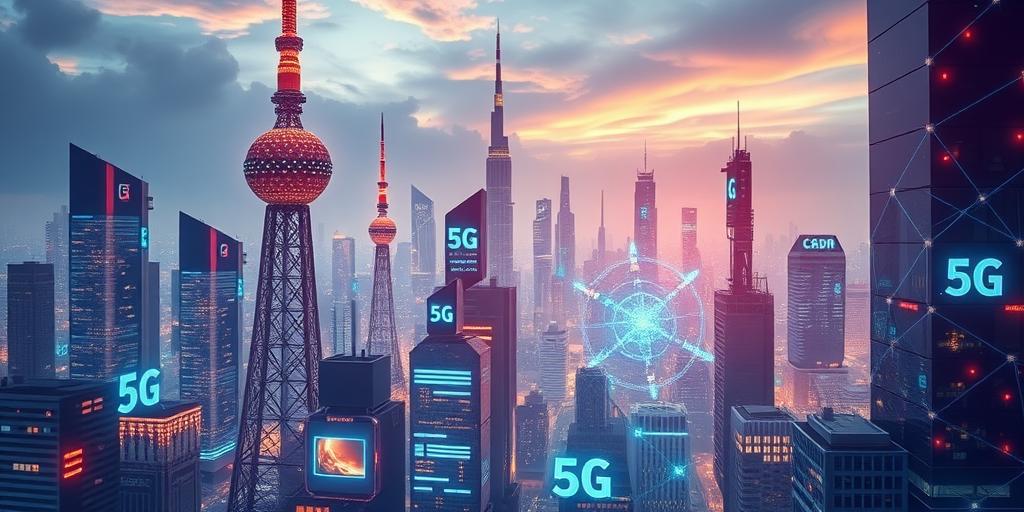The Inner Workings of 5G and Beyond
5G technology has revolutionized the way we connect and communicate, offering unprecedented speeds and capabilities. But what exactly goes on behind the scenes? This post dives into the inner workings of 5G and explores the exciting future of this technology and beyond.
What is 5G?
5G stands for the fifth generation of wireless technology. It represents a significant leap forward from its predecessors, offering faster speeds, lower latency, and greater capacity. 5G networks use a combination of advanced technologies to deliver these improvements.
Key Components of 5G
- Millimeter Waves (mmWave): 5G utilizes higher frequencies, including millimeter waves, to achieve faster data transfer rates. These waves have shorter wavelengths, allowing for more data to be transmitted.
- Massive MIMO (Multiple-Input Multiple-Output): MIMO technology uses multiple antennas at both the transmitter and receiver to increase data throughput and network capacity. Massive MIMO takes this concept to the next level by employing a large number of antennas.
- Beamforming: Beamforming focuses the radio signal towards specific users, improving signal strength and reducing interference. This technology helps to optimize the use of available spectrum and increase network efficiency.
- Network Slicing: Network slicing allows operators to divide the network into multiple virtual slices, each tailored to specific applications and services. This enables the network to prioritize traffic and deliver customized performance based on the needs of different users.
- Edge Computing: Edge computing brings processing power closer to the edge of the network, reducing latency and improving response times. This is particularly important for applications such as autonomous vehicles, IoT devices, and augmented reality.
How 5G Works
- Signal Transmission: When you send a request from your 5G-enabled device, it is transmitted wirelessly to the nearest 5G base station.
- Data Routing: The base station then routes the data through the core network to the appropriate server or destination.
- Data Processing: The data is processed, and a response is sent back through the network.
- Signal Reception: The response is received by the base station and transmitted wirelessly to your device.
5G's use of mmWave, massive MIMO, beamforming, network slicing, and edge computing technologies all contribute to enabling a faster, more efficient, and more reliable wireless experience.
The Future of 5G and Beyond
As 5G technology continues to evolve, we can expect even greater advancements in the years to come. Some potential future developments include:
- Increased Speeds: Future iterations of 5G may offer even faster speeds, pushing the boundaries of what is possible with wireless communication.
- Enhanced Coverage: Efforts are underway to expand 5G coverage to more areas, including rural and underserved communities.
- Integration with AI: Artificial intelligence (AI) is expected to play an increasingly important role in optimizing 5G networks and enabling new applications.
- 6G: Research and development efforts are already underway for 6G, the next generation of wireless technology. 6G is expected to offer even greater capabilities than 5G, including terahertz frequencies and advanced AI integration.
Conclusion
5G technology is transforming the way we live and work, offering faster speeds, lower latency, and greater capacity. By understanding the inner workings of 5G, we can better appreciate the potential of this technology and its impact on the future. As 5G continues to evolve and new technologies like 6G emerge, the possibilities for wireless communication are virtually limitless.









